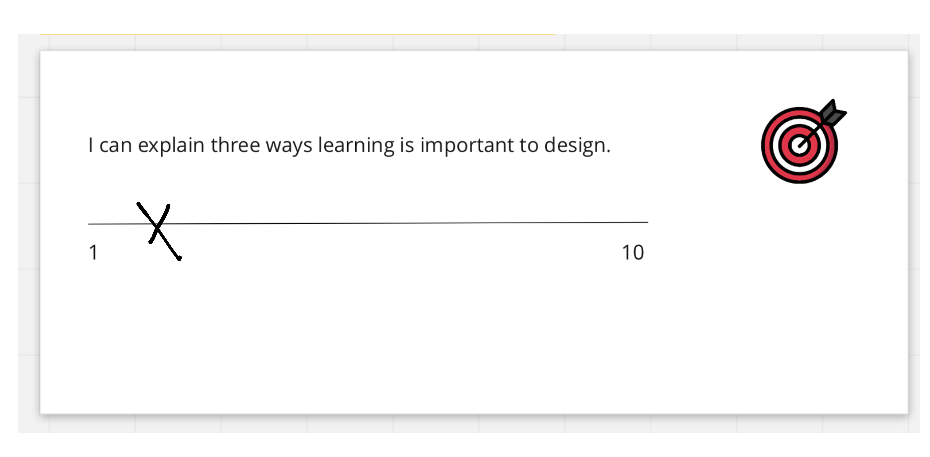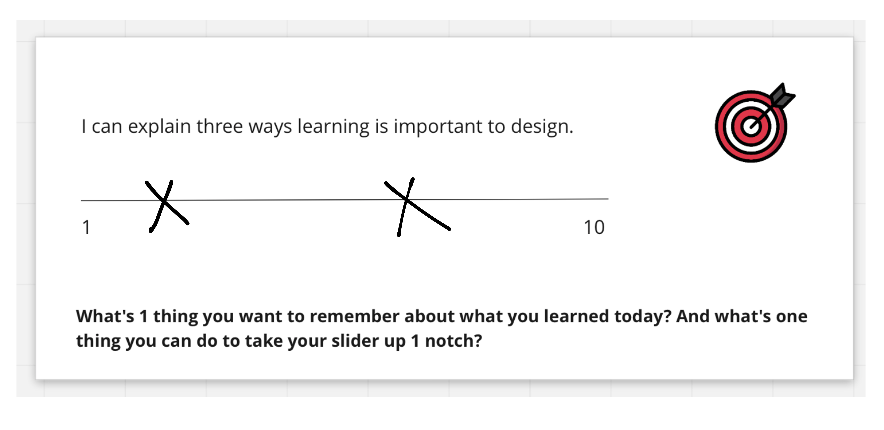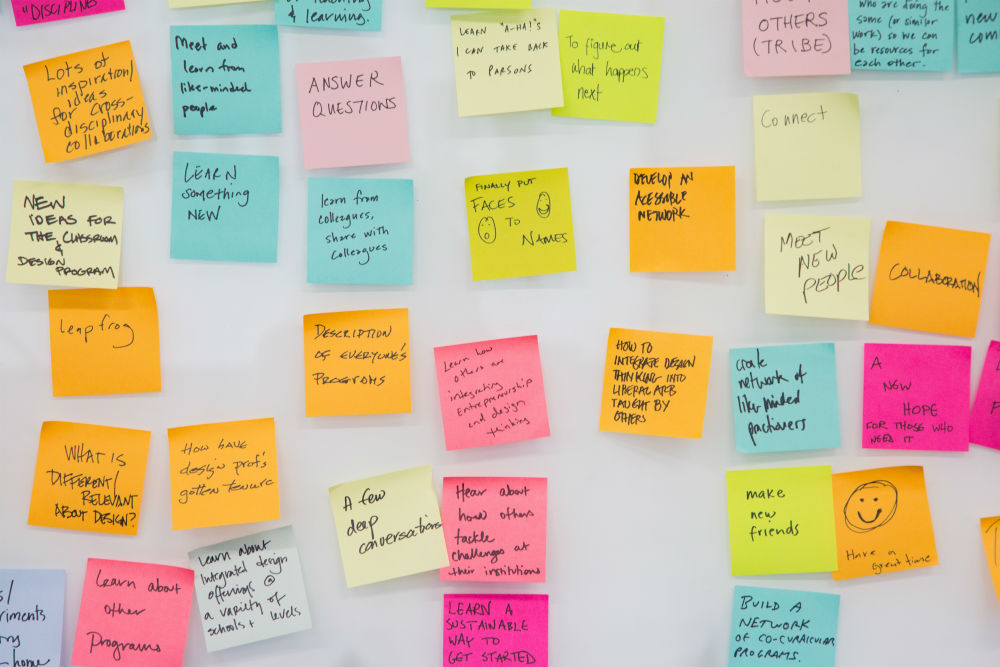(3 1/2 minute read)
How often do you return to your learning outcomes with your students throughout a semester? Many of us spend a tremendous amount of energy (sometimes decades!) developing our learning outcomes for our syllabi at the launch of a course. However, we never revisit them again until the following year during syllabus prep time. Such negligence of our outcomes throughout a course is unfortunate because they can be powerful drivers of learning throughout the semester.
Capture Attention at the Start of Class with a Learning Outcome Slider
Learning outcomes are so important to me that I use them to launch every class meeting and “grab” students’ attention. To do this, I open each class with a Learning Outcome Slider. I designed the Learning Outcome Slider activity to help me create an engagement habit with students at the start of the pandemic, and I’ve maintained it since.
How it Works
At the beginning of each class, I share the learning outcome for that day in the form of a “slider” and ask students to rate how confident they are in their own knowledge/skill specific to that outcome. My script is:
“Ok everyone, let’s take out a piece of paper and draw a line. Put a 1 on the left-hand side and a 10 on the right-hand side. Here’s the learning outcome for today; let’s rate where you are in your confidence with this outcome right now.”

Engaging Students in Metacognition
When you check in on your learning state in this way, it ignites metacognition or thinking about your thinking and learning about a particular topic. Metacognition is a potent learning motivator – when we pay attention to our learning state and take stock of what we know and what we don’t, we are more likely to engage in self-regulated or self-directed learning.
I complete the Slider along with my students. I mark my Slider with two marks: one where I think most of them should be, usually between 1-3, and one where I am (9-10). I then hold up my own Slider and say, “here’s where I think most of you should be right now, so if you are anywhere in this range, you are right where you should be. We will do this at the end of class again to help make your learning visible. Here’s where I am, but I used to be over here with you when I first learned this. The intention for today is to work together to help you move a bit to the right.”
Engaging Students in Autonomy Over their Learning
Gaining awareness of the dissonance between where you are and where you could be may also stimulate one’s innate human desire to improve or evolve. Moreover, instead of an authority figure telling you “you need to improve,” the Slider may work to motivate from within while helping students maintain free will. I see the Learning Outcome Slider activity as an invitation to choose to improve your learning or to sit back and elect not to. Once you see your X over on the left, the latter is a harder choice to make for most of us.
Engaging Students with a Mastery-Orientated Climate
Making sure to give students feedback on their initial judgments of their learning state on the Slider is critical because it encourages a mastery-orientated mindset. Doing the sliders each class period further establishes a mastery-oriented climate. Students can quickly evaluate their learning state and, more importantly, may notice that it is possible to improve it. Feeling like you have a chance to improve, even a little bit, is motivating.
Students who over-estimate their mastery can also calibrate down a few notches if they catch that their instructor is at a 9-10.
Engaging Students with Retrieval
I always return to the Learning Outcome Slider at the end of class. I add an exit prompt to bring students’ attention back to their learning state. Here’s the exit script: “Ok, let’s revisit our Slider for today—Mark where you are on the Slider right now. Take a look at where you were at the beginning of class and where you are at the end. You should have moved up a few notches, you should be about here.” I then display my drawing. Finally, I prompt the students to engage in retrieval by saying: “Take a moment to write down one thing you want to remember about what you learned and one thing you might need to do after class to move your rating a little more to the right.”

With this final retrieval prompt, I’m hoping to ignite the generation effect: A cognitive science phenomenon that indicates we may remember stuff better if we generate it ourselves, rather than reading it or being told that information by someone else. In addition, I am inviting students to gain awareness that they can continue moving up the Slider after class and on their own.
In closing, these little sliders have been a great addition to my courses. I follow these steps whether I am online or face-to-face. The activity takes 5 minutes total, and the benefits are many. Learning Outcome Sliders help capture attention, encourage autonomy, send mastery-oriented messages, all complete with a memory booster to serve as the cherry on top.


Leave a Reply